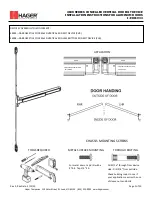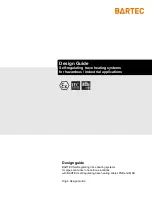
38
VIPER MIG 135
OPERATING MANUAL
15.6 Lack of penetration - Shallow fusion between weld metal and
base metal
•
Poor or incorrect joint preparation:
Material too thick. Joint preparation and design needs to allow access to bottom of
groove while maintaining proper welding wire extension and arc characteristics. Keep the arc at the leading edge of the
weld pool and maintain the gun angle at 5° & 15° keeping the stick out between 5-10mm.
•
Not enough heat input:
Select a higher voltage range and/or adjust the wire speed to suit. Reduce travel speed.
•
Contaminated base metal:
Remove materials like paint, grease, oil, and dirt, including mill scale, from base metal.
15.7 No wire feed
•
Wrong mode selected:
Check that the TIG/MMA/MIG selector switch is set to MIG position.
•
Wrong torch selector switch:
Check that the STANDARD/SPOOL GUN selector switch is set to STANDARD position for
MIG welding and SPOOL GUN when using the spool gun.
15.8 Inconsistent/interrupted wire feed
•
Adjusting wrong dial:
Be sure to adjust the WIRE FEED and VOLTAGE dials for MIG welding. The AMPERAGE dial is for
STICK and TIG welding mode.
•
Wrong polarity selected:
Select the correct polarity for the wire being used - see machine setup guide.
•
Incorrect wire speed setting:
Adjust the wire feed speed.
•
Voltage setting incorrect:
Adjust the voltage setting.
•
MIG torch lead too long:
Small diameter wires and soft wires like aluminium don’t feed well through long torch leads -
replace the torch with a lesser length torch.
•
MIG torch lead kinked or too sharp angle being held:
Remove the kink, reduce the angle or bend.
•
Contact tip worn, wrong size, wrong type:
Replace the tip with correct size and type.
•
Liner worn or clogged (the most common causes of bad feeding):
Try to clear the liner by blowing out with
compressed air as a temporary cure. It is recommended to replace the liner.
•
Wrong size liner:
Install the correct size liner.
•
Blocked or worn inlet guide tube:
Clear or replace the inlet guide tube.
•
Wire misaligned in drive roller groove:
Locate the wire into the groove of the drive roller.
•
Incorrect drive roller size:
Fit the correct size drive roller e.g. 0.8mm wire requires 0.8mm drive roller.
•
Wrong type of drive roller selected:
Fit the correct type roller (e.g. knurled rollers needed for flux cored wires).
•
Worn drive rollers:
Replace the drive rollers.
•
Drive roller pressure too high:
Can flatten the wire electrode causing it to lodge in the contact tip - reduce the drive
roller pressure.
•
Too much tension on wire spool hub:
Reduce the spool hub brake tension.
•
Wire crossed over on the spool or tangled:
Remove the spool, untangle the wire or replace the wire.
•
Contaminated MIG wire:
Use clean, dry, rust-free wire. Do not lubricate the wire with oil, grease etc.
MIG Troubleshooting







































